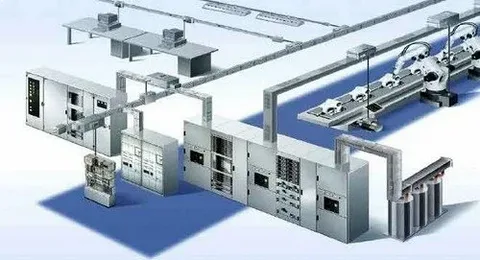| Introduction The Busbar Trunking System Market has become an essential part of modern power distribution infrastructure, offering efficient, reliable, and flexible alternatives to traditional cabling systems. A busbar trunking system (BTS) is a prefabricated electrical distribution system that uses enclosed conductors to transmit electricity with minimal losses. It is extensively adopted in commercial buildings, data centers, industrial plants, and renewable power facilities where scalability and safety are paramount. As industries continue to prioritize energy efficiency, sustainability, and compact electrical layouts, the global busbar trunking system market is experiencing robust growth. Market Drivers The rapid pace of industrialization and urbanization across developing nations is a major driver of the Busbar Trunking System Market. The rising number of smart buildings, manufacturing facilities, and IT infrastructure projects has created a surge in demand for efficient power distribution systems. Additionally, the increasing need for space optimization and reduced installation time compared to conventional cabling systems supports market adoption. Energy efficiency regulations, which emphasize minimizing transmission losses and improving load management, further encourage the use of busbar trunking systems. The expansion of data centers and renewable energy facilities also plays a crucial role, as these systems offer scalability and adaptability for future power expansions. Market Challenges Despite strong demand, several challenges affect market growth. The initial cost of busbar trunking systems is relatively higher than traditional cabling, which can limit adoption among small-scale users. Installation complexity in retrofit projects and the need for technical expertise can also act as barriers. Moreover, fluctuations in raw material prices—particularly copper and aluminum—impact production costs. The presence of counterfeit or low-quality systems in emerging markets can compromise reliability and safety, potentially hindering overall market credibility. Additionally, the lack of awareness about the long-term cost benefits of BTS solutions in some regions remains a challenge for broader adoption. Market Opportunities Technological advancements and the transition toward smart energy management present vast opportunities for the Busbar Trunking System Market. The integration of digital monitoring and IoT-enabled power management is enabling real-time tracking of load, temperature, and faults—enhancing system reliability and preventive maintenance. The growing focus on green building initiatives and sustainable construction offers strong prospects, as busbar systems are more energy-efficient and recyclable than traditional cabling. Additionally, expanding renewable energy installations—particularly solar and wind—are creating new avenues for high-capacity busbar applications. Emerging economies with large-scale infrastructure projects, such as India, Indonesia, and several Middle Eastern countries, represent major growth frontiers. Regional Insights The Asia-Pacific region dominates the global Busbar Trunking System Market, fueled by rapid construction activity, growing manufacturing sectors, and increased adoption of smart grid systems. China and India lead the regional growth due to government-driven infrastructure initiatives and industrial expansion. Europe holds a significant share driven by stringent energy efficiency standards and modernization of existing electrical infrastructure. The Middle East and Africa are witnessing notable growth as large-scale commercial complexes, oil & gas facilities, and renewable projects increasingly utilize BTS solutions. North America shows consistent growth, with strong demand from data centers, hospitals, and commercial buildings focusing on reliable and flexible power distribution. Future Outlook The future of the Busbar Trunking System Market is set for transformation through digitalization and sustainability. Advancements in smart busbar systems with embedded sensors and predictive analytics will redefine power distribution management. Manufacturers are expected to focus on lightweight, modular, and eco-friendly materials to align with global carbon reduction goals. The adoption of plug-and-play configurations and increased emphasis on fire safety and energy conservation will continue to drive innovation. As power demands evolve with electrification and renewable integration, busbar trunking systems are anticipated to remain at the core of efficient and resilient energy networks. Conclusion The Busbar Trunking System Market stands as a cornerstone of modern electrical distribution. Its ability to deliver compact design, safety, and high efficiency positions it as a preferred solution across industries and infrastructure sectors. While cost concerns and technical awareness pose minor challenges, the growing emphasis on sustainability, smart systems, and scalable power solutions ensures a promising future for this market. As industries move toward smarter, greener, and more adaptable energy systems, busbar trunking systems are expected to play a vital role in enabling the next generation of intelligent power infrastructure. |
